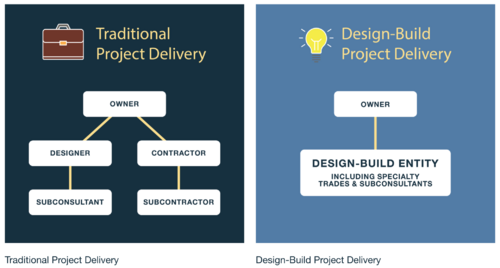Design-Build
(→Figure / Picture) |
(→Figure / Picture) |
||
| Line 38: | Line 38: | ||
=== Figure / Picture === | === Figure / Picture === | ||
| − | [[File:Design-Build vs Traditional.png| | + | [[File:Design-Build vs Traditional.png|500px|center|border|Figure 1: Name of figure (Text and reference)]] |
== Annotated Bibliography == | == Annotated Bibliography == | ||
Revision as of 11:17, 11 February 2021
WIP
Developed by William Axel Linderoth Michaelen, s153275
Example of content: https://en.wikipedia.org/wiki/Design%E2%80%93build
Contents |
Abstract
Design-Build is a project delivery system, mainly used in the construction industry. The method utilizes single source responsibility which differs from the more traditional dual or triple source responsibility format used in Design-Bid-Build. The responsibility is defined by contracts, where the contract in the Design-Build project binds the architect and the contractor under one contract with the project owner. The key reasons for doing so is to create a shared responsibility between the architect and the contractor, and thereby involve the architect in the construction phase, and the contractor in the design phase.
Pros:
- One liable party: Text
- Efficiency: Text
- Collaboration: Text
- Project costs: Text
- Fewer disputes: Text
- Direct payment: Text
Cons:
- Conflicts of interest: Text
- Less innovative design: Text
- Requires more engagement from the owner: Text
- No bidding restricts access for subs: Text
- Increased liability: Text
Big Idea
History
Why choose Design-Build
Management Structures
Limitations
Figure / Picture
Annotated Bibliography
Book title Descriptive text
